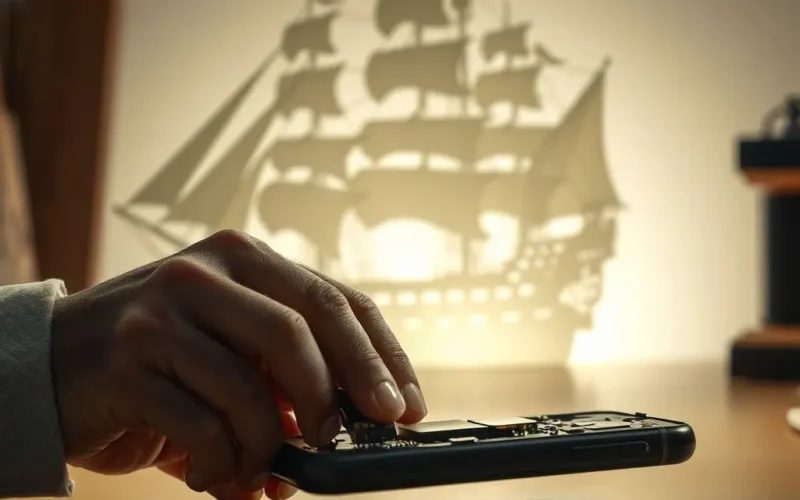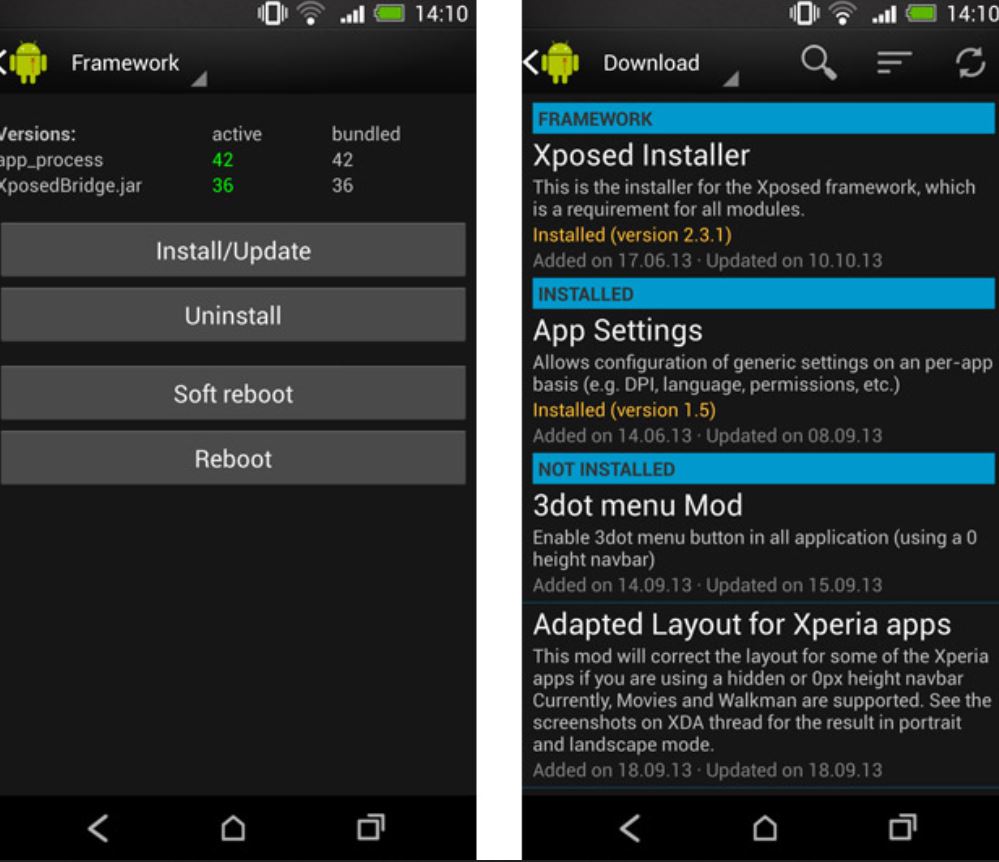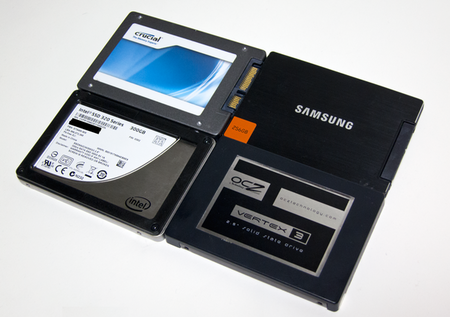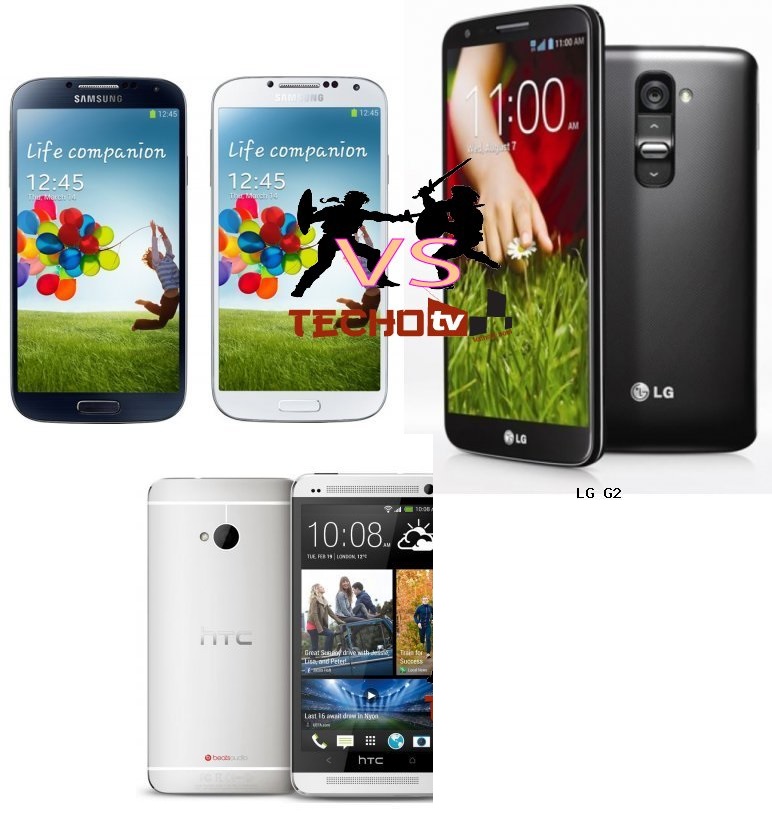Have you ever looked at your trusty smartphone, perhaps after its third screen replacement or a battery swap, and wondered if it’s still the *exact* same device you originally bought? It’s a question that seems simple on the surface, but it plunges us into one of philosophy’s oldest and most intriguing puzzles: the Ship of Theseus paradox.
Forget cracked glass or sluggish performance for a moment. Imagine, over time, you meticulously replace *every single component*. The screen gives way to a new panel. The aging battery is swapped out. The charging port gets finicky, so that’s replaced too. Maybe you even tackle a camera lens or a logic board issue. Piece by piece, the original parts are retired and new ones installed.
At what precise point does this accumulation of new parts fundamentally change the identity of your pocket computer? Is it still the phone that holds the memories of its initial unboxing? Or has it become something else entirely?
If that thought just sent your brain into a philosophical spiral, you’re not alone. We recently tackled this mind-bending question in a quick tech philosophy short. Take a look:
Welcome to the digital age’s version of an ancient riddle.
Table of Contents
Understanding the Ship of Theseus Paradox
The Ship of Theseus is a thought experiment dating back to ancient Greece, famously discussed by philosophers like Plutarch. The scenario is straightforward:
Theseus’s ship, the one he sailed home on after slaying the Minotaur, was preserved in the Athenian harbor. Over time, as the wooden planks rotted, they were removed and replaced with new ones. Eventually, *every single plank* had been replaced.
The question arises: Is the fully repaired ship still the *original* Ship of Theseus?
To add another layer, what if someone collected all the discarded, original planks and reassembled them into a ship? Which ship is the *real* Ship of Theseus? The one with the new parts, or the one made from the old, original parts?
This paradox probes the very nature of identity and persistence through change. How do we define what makes something *itself* over time, especially when its constituent parts are completely swapped out?
Applying the Paradox to Your Smartphone
Now, let’s dock the ancient ship and pick up our modern marvels: smartphones. Unlike ships made of wood, our phones are complex assemblies of silicon, plastic, glass, and rare metals. Yet, they too undergo repair and replacement.
Consider common scenarios:
- A cracked screen is replaced with a brand new one (often a third-party part).
- The battery degrades and is swapped out for a fresh cell.
- A faulty charging port is desoldered and replaced.
- Speakers blow out and get swapped.
- Even components like cameras or vibration motors can be swapped.
If you’re handy or use independent repair shops, it’s entirely possible to replace numerous internal and external parts over the lifespan of a single device. Each replaced part is a ‘plank’ removed from the original ‘ship’.

The paradox bites when you imagine a phone where the screen, battery, charging port, speakers, microphone, camera modules, and perhaps even some internal flex cables have all been replaced over several years. Functionally, it might work perfectly, maybe even better than before the repairs. But is it the *same* physical object that left the factory and you unboxed?
What Constitutes a Smartphone’s Identity?
The Ship of Theseus forces us to consider what defines the ‘identity’ of an object. For a smartphone, several possibilities emerge:
1. Material Identity: Is the phone defined by its original physical components? If so, replacing parts fundamentally changes its identity. A phone with all original parts replaced is, from this perspective, a completely different phone.
2. Functional Identity: Does the identity lie in what it does? If it can still make calls, run apps, take photos, etc., is it the same phone regardless of the parts? This view emphasizes its purpose and capability over its physical makeup at any given moment.

3. Historical/Narrative Identity: Is the phone’s identity tied to its history and journey? This includes the moments it’s captured, the conversations it’s facilitated, the places it’s been, and yes, the repairs it’s undergone. This perspective sees the identity as a continuous story, incorporating the changes.
4. User’s Perspective: Perhaps the identity is subjective. If *you* still perceive it as your phone, the one you rely on daily, does that make it so? This view prioritizes the personal connection and continuous ownership.
5. The ‘Core’ Component: Is there a single irreplaceable ‘soul’? Some might argue it’s the main processor (CPU/GPU) or the non-removable internal storage chip holding the operating system and core data. However, even logic boards can sometimes be repaired at a component level, or in extreme cases, swapped (though less common for typical users). If *that* is swapped, surely it’s a different phone?
The Modern Context: Repairability and Obsolescence
This philosophical puzzle has real-world echoes in the tech industry today. The ‘Right to Repair’ movement advocates for making devices more modular and repairable, allowing users and independent shops to replace parts easily.
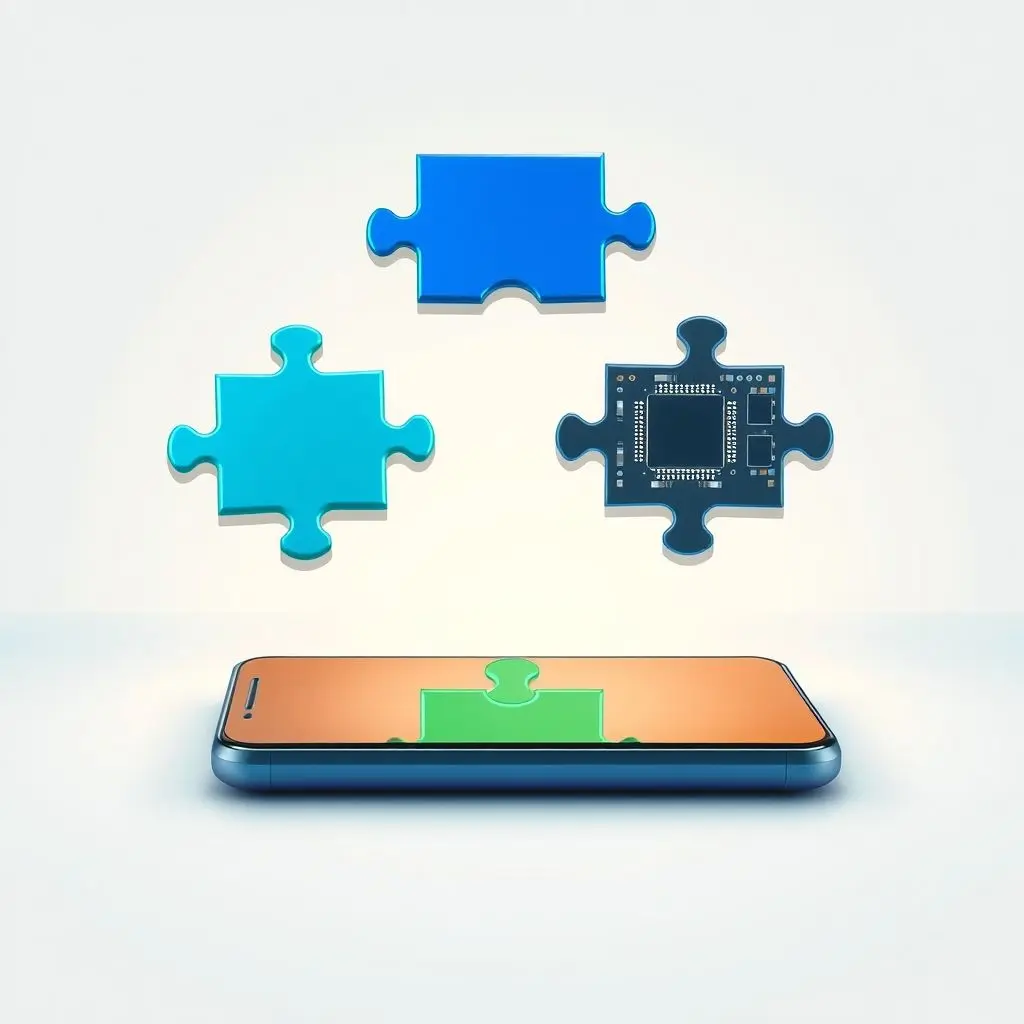
Ironically, as devices become more integrated and components are soldered down, the scenario of replacing *every* single part becomes less likely for the average user. However, it’s still possible in principle, and the philosophical question remains relevant.
Moreover, refurbished phones enter the picture. Are they the ‘original’ phone, or a new entity composed of various parts? Often, refurbished units have undergone significant part replacements. The market treats them differently than ‘new’ phones, acknowledging a change, even if functional identity is restored.
Just as Heraclitus observed that you can’t step into the same river twice because the water is constantly flowing and changing, perhaps you never truly use the *same* phone twice if its physical composition is continually being altered through repair and maintenance.
FAQs: Your Smartphone’s Identity
Let’s address some common questions sparked by this tech-philosophy mashup.
Q: If I replace my cracked screen with an official part, is it still the same phone?
A: From a functional and historical perspective, most people would say yes. One replaced part doesn’t usually challenge the overall identity. Philosophically, however, a purely materialist view would argue a component of the original is gone, initiating a change in material identity. The Ship of Theseus paradox begins with just one plank!
Q: Does the data on the phone determine its identity?
A: Data is certainly a crucial part of the *user’s experience* and the *historical identity* of the phone. If you transfer all your data to a new device, that new device effectively inherits the ‘digital history’. So, while data doesn’t define the physical object’s identity, it’s key to its personal and functional identity from the user’s viewpoint.
Q: Is a refurbished phone a ‘new’ phone or the ‘old’ phone?
A: A refurbished phone occupies a fascinating middle ground. It’s typically the ‘old’ phone in terms of its serial number and chassis, but it may contain a mix of original and replacement parts. Functionally it’s expected to perform like new, but its identity is complex, sitting somewhere between a fully original device and a completely new one. It’s a Ship of Theseus scenario in the marketplace!
Q: If my phone’s motherboard is replaced, is it still the same phone?
A: The motherboard (logic board) is often considered the ‘brain’ or core component, housing the CPU, memory, and storage controller. Replacing it is arguably the strongest case for the identity fundamentally changing from a material perspective. Serial numbers and device identifiers are often tied to the motherboard. For many, this would constitute it being a ‘different’ phone, even if the external shell remains.
More Than Just a Gadget
Thinking about your smartphone through the lens of the Ship of Theseus paradox reveals that our relationship with technology runs deeper than just functionality. These devices become repositories of our lives, accumulating history, data, and repairs. They evolve alongside us.
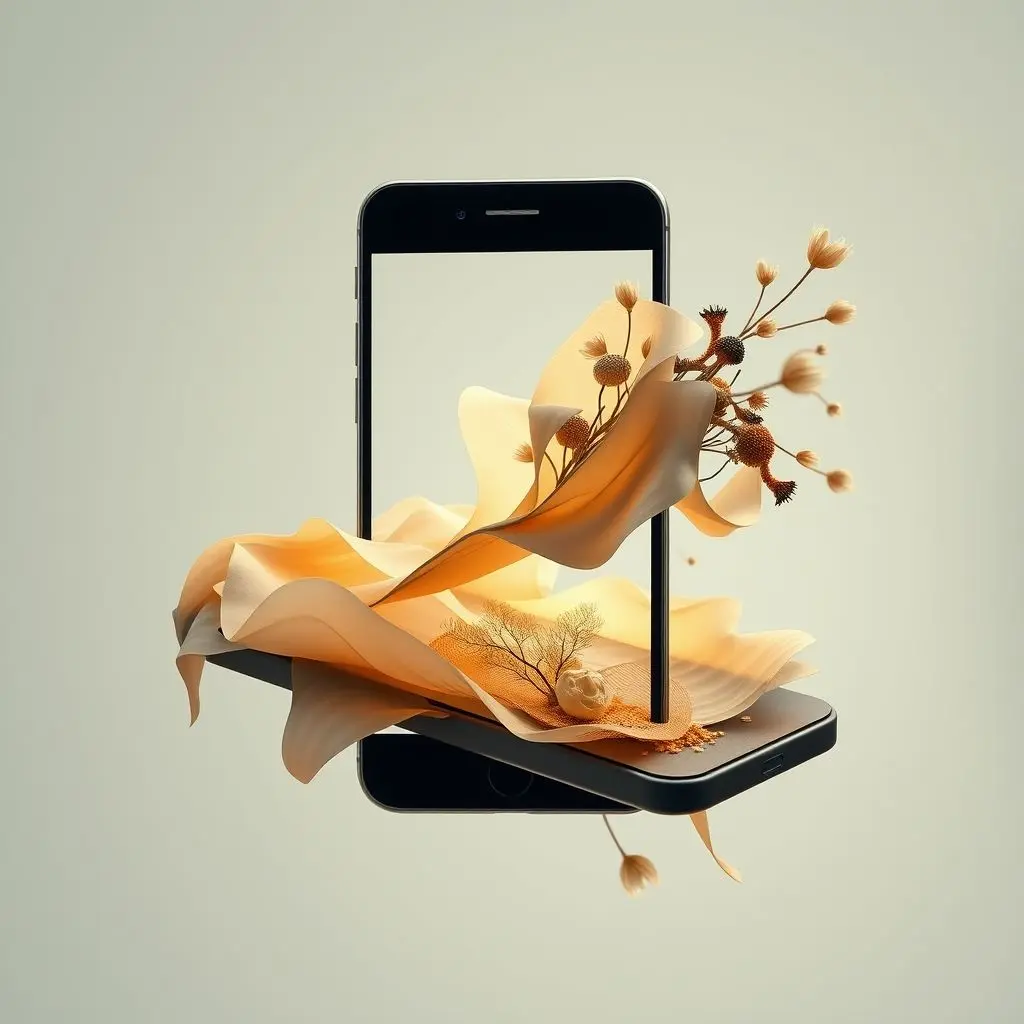
So next time you get your phone fixed, pause for a moment and consider the philosophical puzzle you’re participating in. Is it the same phone you started with, or has it, plank by plank, transformed into a new entity entirely? It’s a question without a single easy answer, prompting us to think about identity, change, and what we truly value in the technology we carry every day.
Just like the ever-changing river, perhaps our phones are in a constant state of becoming, never quite being the exact same thing from one moment (or repair) to the next.
If this deep dive into tech philosophy rebooted your thinking, consider giving this post a digital high-five and subscribe for more explorations where technology meets the big questions!
